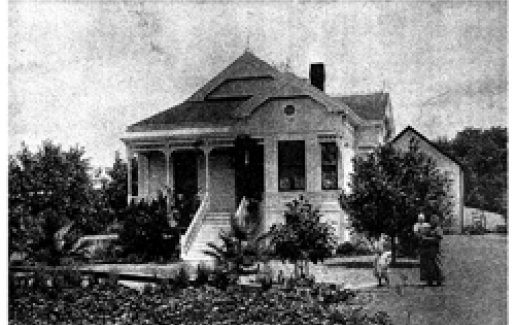Historic Home Complete Loss
A springtime lightning strike severely damaged an historic home built in 1869 and owned by Alden Lofquist, an electrical engineer working in the…
You, Heather, and the rest of the team at The Greenspan Co./Adjusters
International were able to secure a final settlement over 3x the size of the insurance company’s original offer and did so with a greatly reduced investment of my time—not that I would have known how to respond to the insurance company.
Descripción
A springtime lightning strike severely damaged an historic home built in 1869 and owned by Alden Lofquist, an electrical engineer working in the Silicon Valley. The home was originally built in San Ramon, CA and belonged to one of Alamo’s original residents. The historic building was moved from its previous location and transported to its current location in 1989 by Mr. Lofquist. There he had the foundation, framing and electrical brought up to current building codes. At the time of the fire, ten months into a major renovation that would render the house a jewel of restored historical homes in California, the beautiful home was ninety-percent completed and just weeks away from being completed.
Problemas
- Dwelling: The adjuster for the insurance company felt the house was repairable. He secured an estimate and issued a check for repairs in the amount of $340,109. The home was still standing, and from the outside it appeared repairable. What was the true extent of damage? If the home was not repairable, what would it take to present a case for changing the insurance company’s position?
- Personal Property: In pricing the Lofquist’s personal property, the insurance company used a program that priced the contents using a computer program that assigned values to all of their personal property. The settlement proposed by the insurance company of $43,000 would not come close to replacing the high-end belongings that the Lofquists owned. How would the Adjusters International team convince the insurance company to more correctly value the personal property?
Soluciones Aplicadas
- Dwelling: The challenge was to change the mindset of the insurance company. Since Adjusters International team was not involved from the beginning, which would have been preferable, the task would prove to be more difficult. The team met to discuss possible strategies and decided to focus on the foundation. If it could be demonstrated that the foundation was damaged, the cost to repair the house would be excessive. And since the insurance company had done no analysis of the foundation, it was an area that could cause a change in thinking without losing face. Adjusters International retained a construction consultant who assisted the team in inspecting the crawl space and the foundation of the home. Some of the damage to the crawl space and foundation, it was noted, was caused by the fire. As such, the foundation would need to be replaced and brought up to code. This effectively made the house a total loss regardless of appearance to the contrary. Once it was agreed that the house was a constructive total loss, a firm that specializes in appraising historical homes was brought in to determine the value of the home. Since the appraised value exceeded the $1 million dollar policy limit, the insurance company agreed to pay the limits, almost three times their original offer.
- Personal Property: Adjusters International brought in its personal property team. They were able to identify, through receipts and spending patterns, that the pricing structure used by the insurance company was incorrect and needed major changes. In addition, the team identified a large quantity of items missed or overlooked by the insurance company. As such, when the negotiations were complete, the personal property payment was $230,000 or almost six-times the insurance company’s original offer to the Lofquists.
Salir
Before Adjusters International was retained, the Lofquists were offered $383,842. With the retention and help of Adjusters International, the Lofquist’s claim was eventually settled for over $1,300,000, or over three-times more than the insurance company had originally offered.


